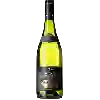
Winery Bêtes CurieusesGoulaine
This wine generally goes well with appetizers and snacks, lean fish or shellfish.
Food and wine pairings with Goulaine
Pairings that work perfectly with Goulaine
Original food and wine pairings with Goulaine
The Goulaine of Winery Bêtes Curieuses matches generally quite well with dishes of shellfish, appetizers and snacks or lean fish such as recipes of scallop mousse, baguette filled with saint moret and ham or japanese fondue.
Details and technical informations about Winery Bêtes Curieuses's Goulaine.
Discover the grape variety: Carricante
It is most certainly of Italian origin, more precisely from Sicily where it is very present, especially on the slopes of the eastern and southern slopes of Mount Etna. It is thought to be the result of a natural cross between montonico pinto and scacco. It has often been confused with the catarratto even today. Carricante is identified today by two known biotypes, A and B, ... a variety almost unknown in France, but registered in the Official Catalogue of wine grape varieties, list A1.
Last vintages of this wine
The best vintages of Goulaine from Winery Bêtes Curieuses are 0
Informations about the Winery Bêtes Curieuses
The Winery Bêtes Curieuses is one of of the world's greatest estates. It offers 13 wines for sale in the of Muscadet-Sevre et Maine to come and discover on site or to buy online.
The wine region of Muscadet-Sevre et Maine
The wine region of Muscadet-Sevre et Maine is located in the region of Muscadet of Muscadet of France. Wineries and vineyards like the Domaine de l'Ecu or the Domaine de Bellevue produce mainly wines white and red. The most planted grape varieties in the region of Muscadet-Sevre et Maine are Melon, Muscadelle and Folle blanche, they are then used in wines in blends or as a single variety. On the nose of Muscadet-Sevre et Maine often reveals types of flavors of cream, asparagus or baked apple and sometimes also flavors of honeydew melon, hay or citrus zest.
The wine region of Loire Valley
The Loire Valley is a key wine region in western France. It follows the course of the Loire River on its Long journey through the heart of France, from the inland hills of the Auvergne to the plains of the French Atlantic coast near Nantes (Muscadet country). Important in terms of quantity and quality, the region produces large quantities (about 4 million h/l each year) of everyday wines, as well as some of France's greatest wines. Diversity is another of the region's major assets; the styles of wine produced here range from the light, tangy Muscadet to the Sweet, honeyed Bonnezeaux, the Sparkling whites of Vouvray and the juicy, Tannic reds of Chinon and Saumur.
The word of the wine: De-vatting
Separation of the fermented juice from all solid particles (skin, pips, deposit of lees) by transferring it to a second tank.














